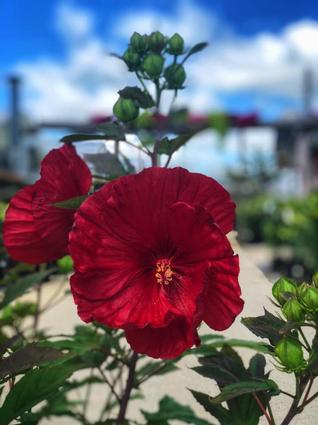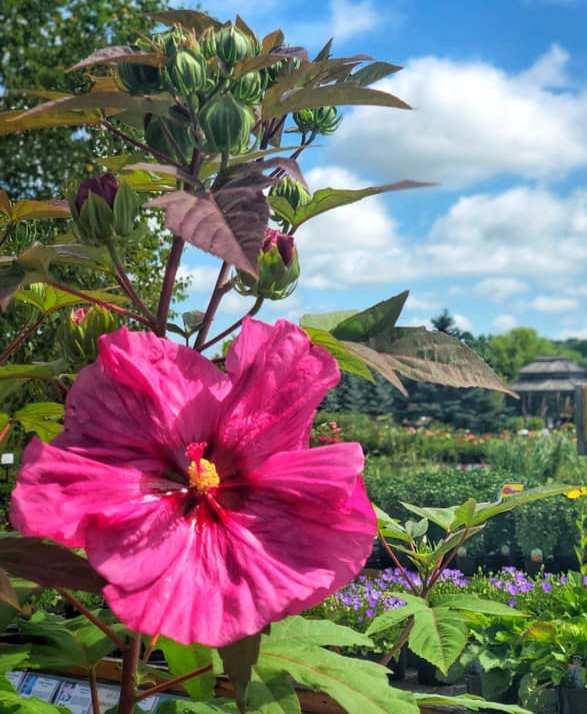Perennial Hibiscus

Growing perennial hibiscus can be easy, fun, and very rewarding. Just follow a few simple steps and you're on your way to more beauty in your flower beds.
Often people think of the tropical houseplant when mentioning this plant, but there is a hardy version that looks just as beautiful. The hardy hibiscus is a slow grower, but it builds size and energy through the summer to finally start flowering in late summer and continue until frost. It puts on quite a show. The flowers are colorful and can be 10 to 12 inches in diameter. They are sometimes called the dinner plate hibiscus for that reason. The plant can grow 5 feet tall and wide filling in an area in the perennial garden, and they also attract hummingbirds. The flowers only last one or two days, but they come in succession keeping the flower show going!
Where, When and How to Plant. Hardy hibiscus is commonly grown throughout our region. Plant after all danger of frost has passed and throughout the summer in well-drained, fertile soil that has been amended with HSU Leaf Compost. Hardy hibiscus like the heat and full sun, so consider planting them near a south-facing wall or building. Space plants 4 feet apart in the garden.
Growing Tips. Since they break so late in spring, while they are still dormant, make sure the soil is well-drained. Once actively growing, hardy hibiscus prefer moist well-drained soils ,so keep plants well-watered and mulched with bark mulch to prevent weeds from crowding them and maintain the soil moisture. Fertilize in spring and again in mid-summer with a layer of compost.
Caring for Your Hibiscus. Hardy hibiscus may not poke through the soil until June - so be patient. Pinch the shoots of young plants in early summer to encourage branching and more flower stalks to form. Keep plants deadheaded to look tidy and prevent the seeds from sowing if you don’t want seedlings. Cut back plants in spring to the ground and compost the flower stalks.
Companion Planting and Design. Plant hardy hibiscus in back of a perennial flower border or among other perennials that bloom in spring such as peonies and iris.
